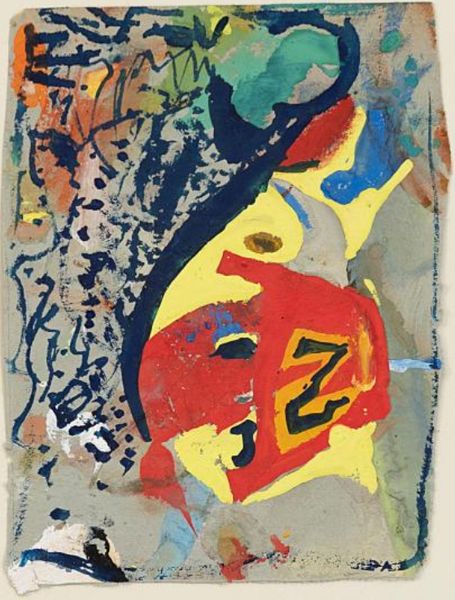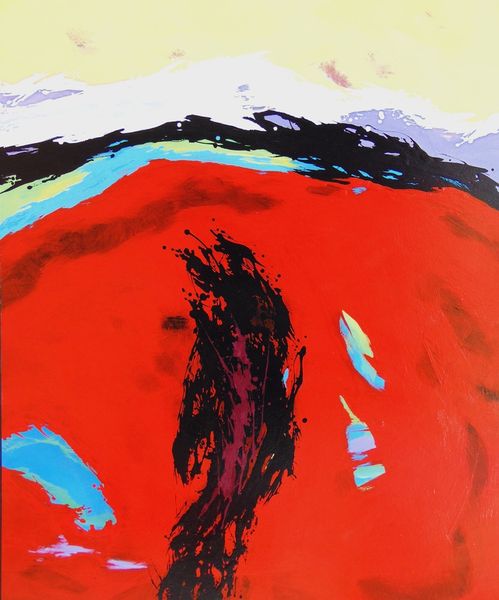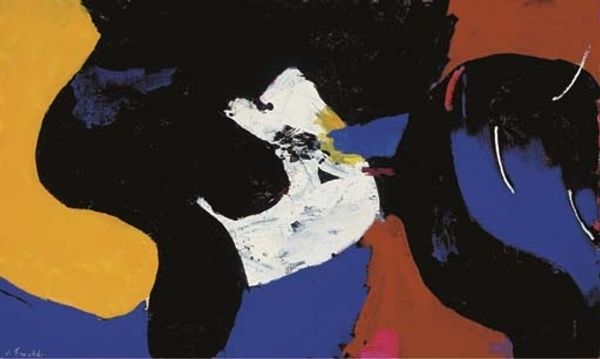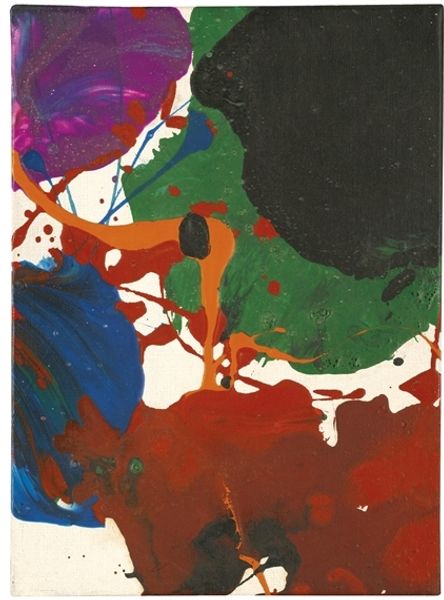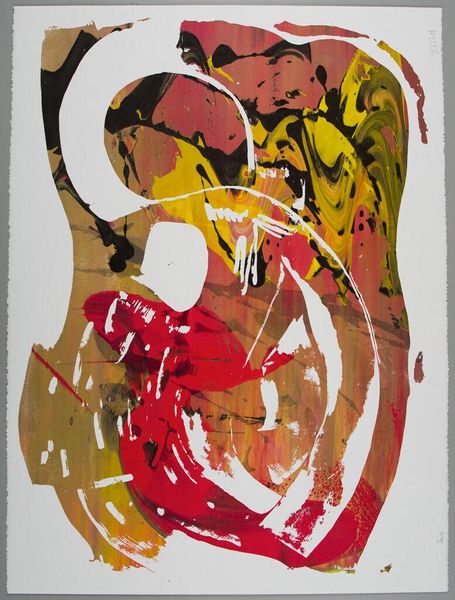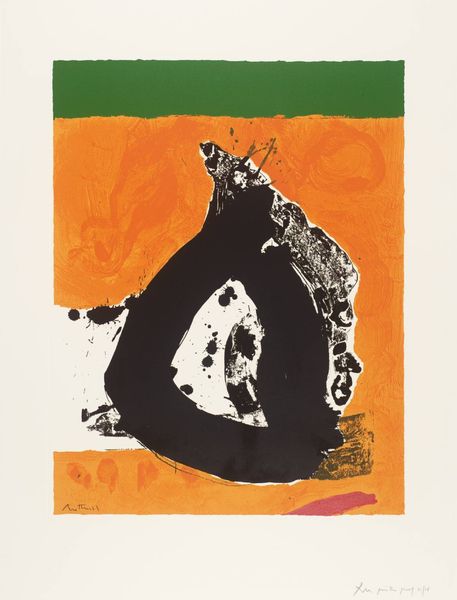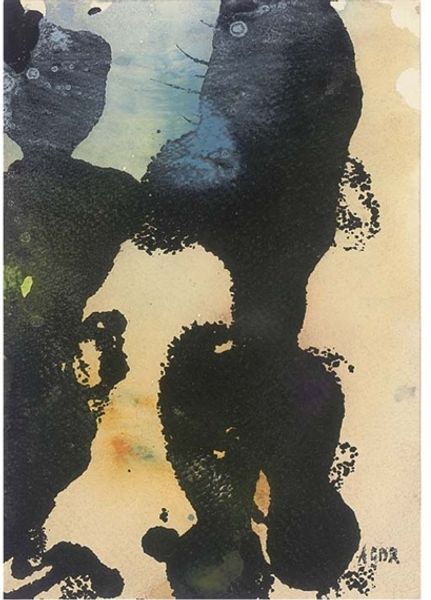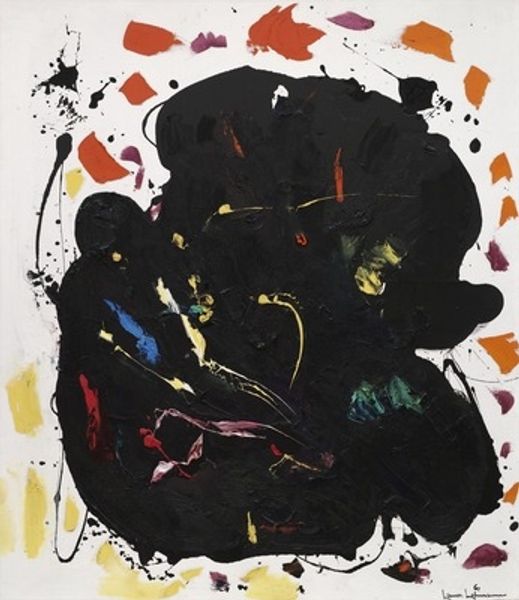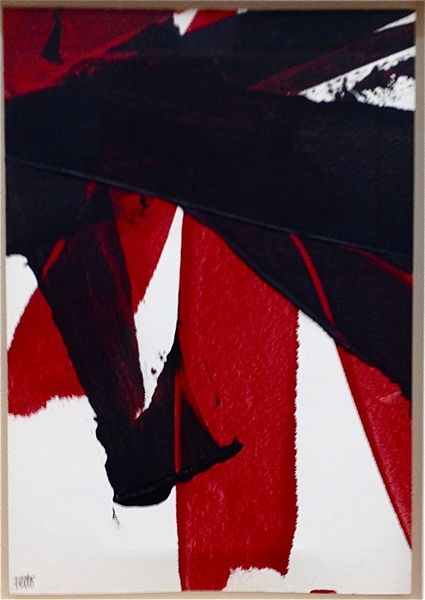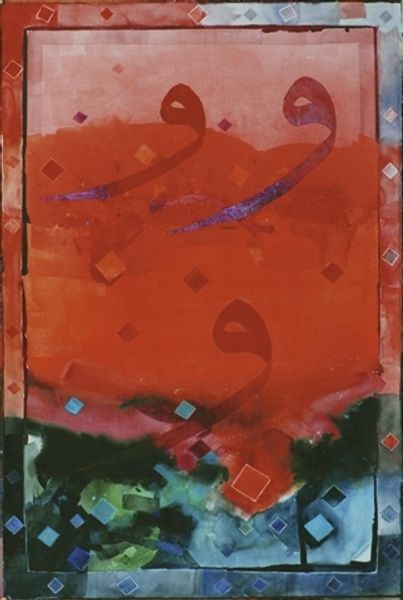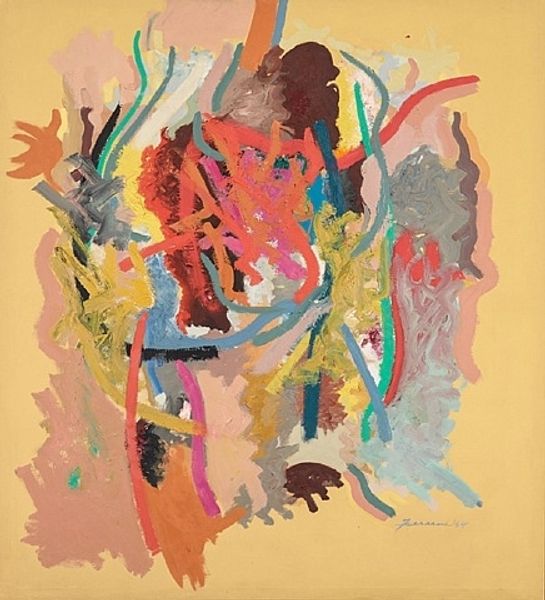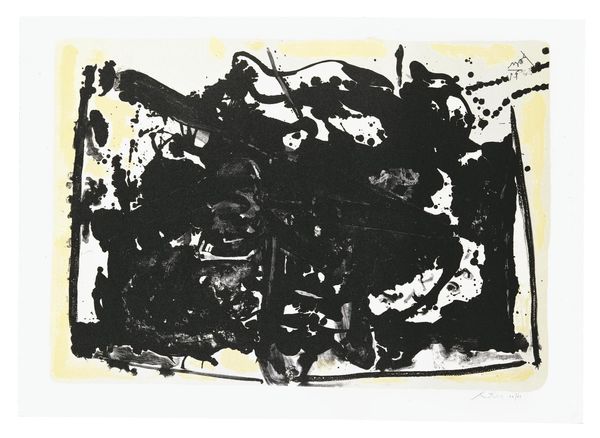
Copyright: 2012 Sam Francis Foundation, California / Artists Rights Society (ARS), NY
Curator: Sam Francis’s "SFP83-52," created in 1983 using acrylic paint, confronts us with a whirlwind of colors and energetic gestures. What's your first take? Editor: Visually, it’s a bit overwhelming, honestly. A dense, almost chaotic darkness seems to want to engulf splatters of white and bursts of sunny yellows. The heavy umber border almost traps the darkness inside the canvas. It evokes a sense of containment and perhaps stifled expression. Curator: The dynamic interplay is quintessential Francis. He emerged as a major figure within the second generation of Abstract Expressionists. What's interesting here is how he engaged with the legacy of figures like Pollock while charting his own chromatic explorations. Consider, particularly, the scale he often worked at. Editor: Exactly! It forces a sense of visceral experience. Knowing he worked at such a large scale makes me consider how it mirrors feelings of being confined and then seeking expansive freedom that can almost lead to chaos if the energy and creative process is suddenly and rapidly released. Is he using that energy for a purpose, though? Does it engage in anything deeper? Curator: Well, some interpret his abstractions as responses to the psychological landscape of the Cold War era. A sense of anxiety is palpable, expressed through disorienting forms and a perceived lack of structure. But also, you can look at the vibrant specks of color breaking free from the dark spaces as expressions of defiance. Editor: The politics of the image becomes pretty potent there, especially as this artwork was done during the Reagan era. But those colors too, make me consider a sort of resilience and that art during political and economic upheaval had a way of reflecting, as you said, the cultural climate of the time. A vibrant statement against darkness, almost. Curator: Absolutely. The socio-political reading offers a critical perspective to his artistry and Abstract Expressionism in general. The genre was initially embraced, even co-opted, to promote American exceptionalism. Francis, along with peers, complicated that narrative. Editor: A fascinating way of breaking away from rigid norms! The colors, composition, materials themselves, it really gets at those cultural nuances of expression and resilience, pushing beyond surface-level observations to embrace broader and perhaps more powerful implications for us today. Curator: It gives one a deeper appreciation of art history to connect with these perspectives! Editor: I definitely agree! I came away seeing how Abstract Expressionism’s original goal, intentional or not, still gives power to the unheard, so it continues to serve a broader audience in an ever changing landscape.
Comments
No comments
Be the first to comment and join the conversation on the ultimate creative platform.
